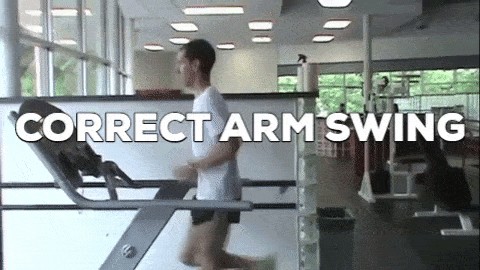Are you wondering, “How Can I Learn To Run?” LEARNS.EDU.VN is here to help you discover the joy and benefits of running, regardless of your current fitness level. This comprehensive guide provides practical tips and expert advice to get you started safely and effectively. Embrace the journey of running with proper technique, training plans, and the right gear.
1. Setting the Stage: Initial Fitness Assessment
Before diving into running, it’s crucial to understand your body’s current condition. Jumping into running without proper preparation can lead to injuries and frustration. Think of this stage as building a solid foundation for a house; without it, the structure won’t stand.
Why Initial Conditioning Matters:
- Reduce Injury Risk: Running places significant stress on your muscles, tendons, and joints. Starting with a base level of fitness minimizes the risk of strains, sprains, and other common running injuries.
- Improve Efficiency: A well-conditioned body runs more efficiently, meaning you’ll use less energy and feel less fatigued.
- Enhance Enjoyment: When you’re not struggling with pain or exhaustion, you’re more likely to enjoy the process and stick with it.
Three Pillars of Initial Conditioning:
-
Nutritional Focus:
- Weight Management: Excess weight puts extra strain on your joints. A balanced diet can help you lose weight, reducing the impact of each step. A study in the Journal of Obesity found that even a small amount of weight loss (5-10%) can significantly improve joint health.
- Energy Levels: Proper nutrition provides the fuel you need to power your runs. Focus on whole foods, lean proteins, and complex carbohydrates.
- Recovery: Nutrients play a vital role in muscle repair and recovery after exercise. Ensure you’re getting enough protein, vitamins, and minerals.
-
Strength Training:
- Muscle Strengthening: Strength training strengthens the muscles that support your joints, reducing the risk of injury.
- Improved Form: Stronger muscles contribute to better running form, which makes running more efficient and less stressful on your body.
- Injury Prevention: A study published in the American Journal of Sports Medicine showed that strength training can reduce running-related injuries by up to 50%.
- Recommended Exercises:
- Squats: Strengthens legs and core.
- Lunges: Improves balance and leg strength.
- Plank: Strengthens core for better posture.
- Calf Raises: Strengthens calf muscles for ankle support.
-
Low-Impact Activities:
- Gradual Adaptation: Low-impact activities like walking, hiking, biking, swimming, and using an elliptical machine allow your body to gradually adapt to exercise without the high impact of running.
- Cardiovascular Health: These activities improve cardiovascular health, building a foundation for more strenuous exercise.
- Active Recovery: Low-impact exercise can also be used as active recovery on days you’re not running.
Sample Initial Conditioning Plan (4 Weeks):
| Week | Nutrition | Strength Training (3x/week) | Low-Impact Activity (3-5x/week) |
|---|---|---|---|
| 1 | Focus on whole foods, reduce processed foods. | Bodyweight squats (3 sets of 10-12 reps), plank (3 sets, hold 30 seconds) | 30-minute brisk walks |
| 2 | Increase protein intake, add more fruits and vegetables. | Lunges (3 sets of 10-12 reps per leg), calf raises (3 sets of 15-20 reps) | 45-minute brisk walks |
| 3 | Monitor calorie intake, ensure adequate hydration. | Squats with light weights (3 sets of 8-10 reps), plank (3 sets, hold 45 seconds) | 30-minute bike rides, alternating with walks |
| 4 | Maintain healthy eating habits, focus on pre- and post-workout nutrition. | Lunges with light weights (3 sets of 8-10 reps per leg), calf raises with weights (3 sets of 12-15 reps) | 60-minute hikes or swims |










Remember, consistency is key. Even short, regular sessions are more effective than sporadic, intense workouts.
2. The Importance of Warm-Ups for Runners
Warming up is a crucial step often overlooked by beginner runners. A proper warm-up prepares your muscles, tendons, and joints for the demands of running, reducing the risk of injury and improving performance. Forget static stretching before running, which studies suggest can increase injury risk. Focus instead on dynamic movements that mimic the motions of running.
Benefits of Dynamic Warm-Ups:
- Increased Blood Flow: Warms up muscles, making them more pliable and less prone to strains.
- Improved Range of Motion: Enhances joint mobility, allowing for more efficient and fluid movements.
- Enhanced Neuromuscular Activation: Activates the nervous system, improving coordination and reaction time.
- Injury Prevention: Reduces the risk of muscle tears, sprains, and other common running injuries.
Sample Dynamic Warm-Up Routine (10-15 minutes):
- Leg Swings (Forward and Sideways):
- Purpose: Increases range of motion in the hips and legs.
- How to: Stand tall and swing one leg forward and backward, then sideways. Repeat 10-15 times per leg.
- Arm Circles (Forward and Backward):
- Purpose: Warms up shoulder muscles and improves mobility.
- How to: Extend arms to the sides and make small circles forward, then backward. Gradually increase the size of the circles. Repeat for 30 seconds in each direction.
- High Knees:
- Purpose: Activates hip flexors and core muscles.
- How to: Lift your knees high towards your chest while jogging in place. Continue for 30 seconds.
- Butt Kicks:
- Purpose: Stretches quadriceps and improves leg turnover.
- How to: Kick your heels back towards your glutes while jogging in place. Continue for 30 seconds.
- Walking Lunges:
- Purpose: Strengthens legs and improves balance.
- How to: Step forward into a lunge, keeping your front knee behind your toes. Alternate legs and continue for 10-12 reps per leg.
- Torso Twists:
- Purpose: Improves core stability and flexibility.
- How to: Stand with feet shoulder-width apart and twist your torso from side to side, keeping your hips stable. Continue for 30 seconds.
Additional Resources:
- Strength Running Video: A running-specific warm-up video from Jason at Strength Running.
- Nerd Fitness Warm-Up Guide: More warm-up moves and tips.
Key Takeaway:
Just like strength training, warming up is non-negotiable. If you don’t have time to warm up, shorten your run, but don’t skip the warm-up.
3. Mastering Correct Running Technique
Correct running technique is essential for injury prevention and efficient performance. Without proper form, you’re putting unnecessary stress on your joints and muscles, increasing the risk of overuse injuries.
The Five Pillars of Correct Running Technique:
-
Ankle Lean:
- Why: Maintains body alignment, engaging the right muscles efficiently.
- How: Lean forward slightly from your ankles, keeping a straight line from your ankles through your hips to your head. You should feel like you’re about to fall forward.
-
Cadence Increase:
- Why: Reduces stress on legs by shortening foot strikes.
- How: Aim for a cadence of 170-190 steps per minute. Use a metronome or a playlist with music at that tempo.
Example Music: Outkast’s “Hey Ya”
- Benefits: Less impact shock, improved efficiency, reduced injury risk.
-
Foot Strike Alignment:
- Why: Distributes impact shock evenly and efficiently.
- How: Ensure your foot lands underneath your body, not in front of it.
- Mental Cue: Think of “putting your foot down” in a straight line underneath your body.
-
Midfoot Landing:
- Why: Absorbs impact shock and prevents severe heel striking.
- How: Land with your foot flat on the ground, rather than with your toes angled upwards.
-
Symmetrical Arm Swings:
- Why: Maintains balance and efficient momentum.
- How: Keep your arms bent at 90 degrees and swing them front-to-back, not side-to-side. Avoid crossing your hands over the midline of your body.
Additional Tips for Good Running Form:
- Keep a tall back and chest up. Avoid slouching.
- Look 30-50 meters ahead, not down at your toes.
- Run softly and quietly.
Seeking Feedback:
Record yourself running and review the footage to identify areas for improvement.
LEARNS.EDU.VN also offers form checks with running experts who will happily evaluate and correct your posture, cadence, and arm swings.
4. Crawl, Walk, Run: A Gradual Progression
Starting a running practice can be daunting, so it’s essential to start slowly and gradually increase your mileage and intensity. This approach reduces the risk of injury and allows your body to adapt to the demands of running.
Five Steps to Start Your Running Practice:
- Get Comfortable Walking for 20 Minutes:
- Goal: Build a base level of fitness and cardiovascular endurance.
- How: Stroll around your neighborhood a few times a week until walking feels easy.
- Increase to 30 Minutes of Walking:
- Goal: Further improve cardiovascular endurance.
- How: Extend your walks to 30 minutes.
- Start Run/Walking:
- Goal: Introduce running intervals to gradually build strength and stamina.
- How: Walk for 10 minutes, then alternate between 1 minute of jogging and 2 minutes of walking for 10 minutes. Finish with 10 minutes of walking.
- Increase Running Intervals:
- Goal: Gradually increase running time and decrease walking time.
- How: Warm up with 10 minutes of walking, then alternate between 1.5-2 minutes of jogging and shorter walking breaks as needed.
- Become a Runner:
- Goal: Run continuously for longer periods with minimal walking breaks.
- How: Continue to expand your jogging time and lower the amount of time you walk.
Sample Progression Plan (8 Weeks):
| Week | Activity | Duration | Frequency | Notes |
|---|---|---|---|---|
| 1 | Walking | 20 minutes | 3x/week | Focus on a comfortable pace |
| 2 | Walking | 30 minutes | 3x/week | Increase pace slightly |
| 3 | Run/Walk | 30 minutes | 3x/week | 1 minute run, 2 minutes walk |
| 4 | Run/Walk | 30 minutes | 3x/week | 1.5 minutes run, 1.5 minutes walk |
| 5 | Run/Walk | 30 minutes | 3x/week | 2 minutes run, 1 minute walk |
| 6 | Run/Walk | 30 minutes | 3x/week | 3 minutes run, 1 minute walk |
| 7 | Run/Walk | 30 minutes | 3x/week | 5 minutes run, 1 minute walk |
| 8 | Run | 20-30 minutes continuous | 3x/week | Maintain a comfortable pace, take walking breaks as needed |
Key Takeaway:
Patience is paramount. Progress at your own pace, and don’t be afraid to take walking breaks when needed.
5. Choosing the Right Running Shoes
The right running shoes can make a significant difference in your comfort, performance, and injury risk. A good running shoe should provide cushioning, support, and flexibility, allowing your foot to move naturally.
Four Key Components of a Good Running Shoe:
- Minimal Heel Drop:
- Why: A lower heel-toe height difference promotes a more natural foot strike and reduces stress on your ankle and lower leg.
- What to Look For: Shoes with a “zero-drop” or a minimal drop (less than 8mm).
- Wide Toe Box:
- Why: Allows your foot to spread naturally upon landing, improving stability and comfort.
- What to Look For: Shoes with a toe box that is at least as wide as your foot when you’re standing.
- Pliable Bottom:
- Why: Enables your toes to bend fully during the gait cycle, strengthening your foot muscles.
- What to Look For: Shoes with a flexible sole that allows your big toe to flex to ninety degrees.
- Secure Fit:
- Why: Prevents your toes from grabbing at the shoe with each step, reducing stress on your foot bones.
- What to Look For: Shoes that can be securely strapped around your ankle.
Additional Considerations:
- Weight: Lighter shoes can improve efficiency, but prioritize comfort and support.
- Cushioning: Choose cushioning based on your weight, running surface, and personal preference.
- Arch Support: If you have flat feet or high arches, consider shoes with appropriate arch support.
Recommended Brands:
- Altra: Known for their zero-drop shoes and wide toe boxes.
- New Balance: Offers a variety of shoes with different levels of cushioning and support.
- Brooks: Popular for their comfortable and durable running shoes.
Key Takeaway:
Visit a specialty running store for a professional fitting. They can analyze your gait and recommend shoes that are best suited for your individual needs. You can find a qualified sales associate at the US branch of LEARNS.EDU at 123 Education Way, Learnville, CA 90210, United States.
6. Choosing the Right Running Surface
The surface you run on can impact your body in different ways, so it’s essential to choose wisely. Consider the pros and cons of each surface to minimize injury risk and maximize performance.
Common Running Surfaces and Their Impact:
-
Asphalt (Road):
- Pros: Stable, predictable surface.
- Cons: Can have a slight slope, leading to muscle imbalances.
- Recommendation: Alternate sides of the road if traffic conditions allow.
-
Concrete (Sidewalk):
- Pros: Readily available in urban areas.
- Cons: Harder than asphalt, resulting in higher impact forces.
- Recommendation: Ensure good running form to minimize impact.
-
Grass (Fields):
- Pros: Softer surface, reducing impact.
- Cons: Uneven terrain can increase the risk of ankle sprains.
- Recommendation: Run on hard-packed, smooth grass, such as a golf course.
-
Dirt or Crushed Gravel Trails:
- Pros: Impact-dissipating qualities, firm footing.
- Cons: Can be uneven in places.
- Recommendation: Best overall running surface.
-
Single-Track Trails:
- Pros: Builds strength in stabilizing muscles, fun and engaging.
- Cons: Uneven terrain, sharp turns, and obstacles increase injury risk.
- Recommendation: Run sparingly, focus on shorter distances.
-
Track:
- Pros: Forgiving surface, good for workouts.
- Cons: Constant left turns can lead to muscle imbalances, not ideal for everyday training.
- Recommendation: Use for speed workouts, not long-distance runs.
General Recommendations:
- Variety: Expose your body to a variety of surfaces to minimize overuse injuries.
- Listen to Your Body: If you’re sore, run on a softer surface.
- Avoid Concrete and Technical Trails: Due to the increased risk of injury.
Key Takeaway:
Ideally, your training should be a combination of all available surfaces. Exposing your body to variety prevents doing the same thing over and over again. If you would like additional tips on the best running spots in your area, contact LEARNS.EDU.VN today on Whatsapp: +1 555-555-1212.
7. Running for Weight Loss: Fact vs. Fiction
Many people start running with the goal of losing weight. While running can contribute to weight loss, it’s not a magic bullet. Success depends on consistency and, most importantly, a healthy diet.
The Truth About Running and Weight Loss:
- Running Can Help You Lose Weight IF:
- You run consistently.
- You eat a healthy diet.
- Running Won’t Help You Lose Weight IF:
- You run consistently.
- You don’t fix your diet.
Why Diet Matters:
- Calorie Balance: Weight loss occurs when you burn more calories than you consume. Running burns calories, but it’s easy to negate those calories by overeating.
- Nutrition is Key: Nutrition is 90% of the battle!
Tips for Combining Running and Weight Loss:
- Track Your Calories: Use a food journal or app to monitor your calorie intake.
- Focus on Whole Foods: Eat plenty of fruits, vegetables, lean proteins, and complex carbohydrates.
- Limit Processed Foods, Sugary Drinks, and Unhealthy Fats: These foods are high in calories and low in nutrients.
- Don’t “Outrun Your Fork”: Avoid rewarding yourself with excessive calories after a run.
- Strength Train: Building muscle increases your metabolism, helping you burn more calories at rest.
Alternative Activities:
If you don’t enjoy running, there are plenty of other activities that can help you lose weight, such as hiking, strength training, martial arts, and ultimate Frisbee.
Key Takeaway:
Running can be a valuable tool for weight loss, but it’s not a substitute for a healthy diet. Focus on creating a calorie deficit through a combination of exercise and nutrition.
8. Taking the Next Steps in Your Running Journey
Once you’re comfortable running regularly, you can start thinking about taking your practice to the next level. Consider setting new goals, exploring different types of running, and joining a running community.
Potential Next Steps:
- Run a Race:
- 5K, 10K, Half Marathon, Marathon: Choose a distance that challenges you but is also achievable.
- Training Plan: Follow a structured training plan to prepare for your race.
- Fun Runs: Consider running a themed or charity race for a fun and rewarding experience.
- Join a Running Club:
- Benefits: Social support, motivation, and access to group runs and training advice.
- Local Clubs: Search online for running clubs in your area.
- Explore Trail Running:
- Challenge: Test your skills on more challenging terrain.
- Scenery: Enjoy the beauty of nature while you run.
- Safety: Start with well-maintained trails and gradually progress to more technical terrain.
- Incorporate Speed Workouts:
- Interval Training: Alternate between high-intensity running and recovery periods.
- Tempo Runs: Sustain a comfortably hard pace for a set period of time.
- Benefits: Improve speed, endurance, and running efficiency.
- Set Performance Goals:
- Time Goals: Aim to improve your 5K, 10K, or marathon time.
- Distance Goals: Increase your weekly or monthly mileage.
- Personal Bests: Track your progress and celebrate your achievements.
Additional Resources:
- Couch to 5K: A popular program for beginners to train for their first 5K race.
- Strength Running: A website with expert advice on proper running form and training.
- LEARNS.EDU.VN: Access expert advice, training plans, and a supportive community.
Key Takeaway:
Continuously challenge yourself and set new goals to stay motivated and engaged in your running practice.
9. Embracing the Benefits of Running
Running offers numerous physical and mental health benefits, making it a worthwhile activity for people of all ages and fitness levels.
Physical Health Benefits:
- Cardiovascular Health: Strengthens your heart and improves circulation.
- Weight Management: Burns calories and helps maintain a healthy weight.
- Muscle Strength: Strengthens leg and core muscles.
- Bone Density: Increases bone density, reducing the risk of osteoporosis.
- Improved Sleep: Promotes better sleep quality.
Mental Health Benefits:
- Stress Relief: Reduces stress and anxiety.
- Mood Booster: Releases endorphins, improving mood and overall well-being.
- Increased Self-Esteem: Builds confidence and self-esteem.
- Cognitive Function: Improves cognitive function and memory.
- Connection with Nature: Trail running and outdoor running provide a connection with nature, promoting relaxation and mindfulness.
Tips for Enjoying Running:
- Find a Running Buddy: Running with a friend can make the activity more enjoyable and motivating.
- Listen to Music or Podcasts: Distract yourself from the effort with your favorite tunes or podcasts.
- Explore New Routes: Keep your runs interesting by exploring new routes and trails.
- Set Realistic Goals: Start with small, achievable goals and gradually progress.
- Reward Yourself: Celebrate your achievements with non-food rewards, such as new running gear or a massage.
Key Takeaway:
Focus on the positive aspects of running and celebrate your progress. Enjoy the journey, and don’t be afraid to experiment and find what works best for you.
10. Addressing Common Running Concerns
It’s normal to have questions and concerns when starting a running practice. Here are some answers to common questions:
FAQ About Learning to Run:
- Is running bad for my knees? Running itself isn’t inherently bad for your knees. However, improper form, overtraining, and running with pre-existing knee conditions can increase the risk of knee pain. Focus on proper form, gradual progression, and strength training to protect your knees.
- How often should I run? Start with 2-3 runs per week, with rest days in between. Gradually increase the frequency and duration of your runs as your body adapts.
- What should I eat before a run? Focus on easily digestible carbohydrates, such as a banana, toast, or oatmeal. Avoid high-fat and high-fiber foods, which can cause digestive issues.
- What should I eat after a run? Replenish your glycogen stores with carbohydrates and repair muscle tissue with protein. Good options include a smoothie with fruit and protein powder, a sandwich with lean meat, or yogurt with granola.
- How do I prevent chafing? Wear moisture-wicking clothing and apply anti-chafing balm to areas prone to friction.
- How do I stay motivated? Set realistic goals, track your progress, find a running buddy, and reward yourself for your achievements.
- What should I do if I experience pain while running? Stop running immediately and rest. If the pain persists, consult with a healthcare professional.
- Can I run if I’m overweight? Yes, but start slowly and gradually increase your mileage. Focus on low-impact activities like walking and strength training to build a base level of fitness.
- How do I breathe properly while running? Practice deep, diaphragmatic breathing. Inhale through your nose and exhale through your mouth.
- What are the best apps for tracking my runs? Popular running apps include Strava, Runkeeper, and Nike Run Club.
Key Takeaway:
Address your concerns by seeking reliable information and consulting with healthcare professionals when needed.
Running is a rewarding and accessible activity that can improve your physical and mental health. By following the tips and advice in this guide, you can learn to run safely, effectively, and enjoyably. Remember to start slowly, focus on proper technique, and listen to your body.
Want to learn more and take your running to the next level? Visit learns.edu.vn for expert advice, training plans, and a supportive community. Contact us today on Whatsapp: +1 555-555-1212, or visit our US branch at 123 Education Way, Learnville, CA 90210, United States.